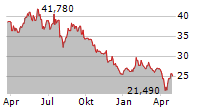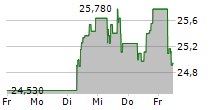
TOKYO, May 9, 2024 /PRNewswire/ -- The Global Health Innovative Technology (GHIT) Fund announced today a total investment of approximately JPY 1.64 billion (USD 10.8 million1) in four projects for the development of new drugs for malaria and neglected tropical diseases (NTDs).2
The GHIT Fund invests in the development of new drugs, vaccines, and diagnostics for neglected infectious diseases such as malaria, tuberculosis, and NTDs, which predominantly affect the world's vulnerable and underserved populations. These R&D projects must involve partnerships between Japanese and non-Japanese organizations, and the four new projects consist of diverse partnerships including Japanese pharmaceutical companies and universities, as well as non-Japanese research institutions and universities.
The GHIT Fund will invest approximately JPY 444 million (USD 2.9 million1) in two malaria projects: the development of malaria chemoprevention drug through a partnership among Shionogi & Co., Ltd., Nagasaki University, National Institute of Infectious Diseases, and Medicines for Malaria Venture (MMV), and therapeutic drug development led by Eisai Co., Ltd., the Scripps Research Institute, and International Centre for Genetic Engineering and Biotechnology (ICGEB).
For NTDs, the GHIT Fund will also invest approximately JPY 1.2 billion (USD 7.9 million1) in two projects: drug development for onchocerciasis and lymphatic filariasis led by Eisai Co., Ltd., University Hospital Bonn, and Helmholtz Centre for Infection Research, and the development of a treatment for Chagas disease led by Mitsubishi Tanabe Pharma Corporation and Drugs for Neglected Diseases initiative (DNDi).
The GHIT Fund plays a catalytic role in matching Japanese and global partners to accelerate R&D resulting in the support of over 180 development partners since 2013. Through global partnerships, the GHIT Fund aims to promote open innovation in R&D and create an environment that enables the rapid delivery of products to patients in need.
Please refer to Appendix 1 for a detailed description of each project and its development stage.
As of March 31, 2024, the GHIT Fund invested in 36 projects, including 12 discovery projects, 16 preclinical projects, and 8 clinical trials3 in the portfolio. The total amount of investments since 2013 is JPY 33.2 billion (USD 219 million) (Appendix 2).
1USD1 = JPY151.33, the approximate exchange rate on March 31, 2024.
2 These awarded projects were selected and approved as new investments from among proposals to RFP2023-001 for the Product Development Platform, which was open for applications from November 2022 to July 2023.
3 This number includes projects in the registration phase.
The GHIT Fund is a Japan-based international public-private partnership (PPP) fund that was formed between the Government of Japan, multiple pharmaceutical companies, the Bill & Melinda Gates Foundation, Wellcome, and the United Nations Development Programme (UNDP). The GHIT Fund invests in and manages an R&D portfolio of development partnerships aimed at addressing neglected diseases, such as malaria, tuberculosis, and neglected tropical diseases, which afflict the world's vulnerable and underserved populations. In collaboration with global partners, the GHIT Fund mobilizes Japanese industry, academia, and research institutes to create new drugs, vaccines, and diagnostics for malaria, tuberculosis, and neglected tropical disease s.
https://www.ghitfund.org/en
Appendix 1. Project Details
G2023-218
Project Title | Lead optimization and candidate selection of a novel long-acting injectable which targets malarial electron transport chain for malaria chemoprevention and prophylaxis |
Collaboration Partners | 1. Shionogi & Co., Ltd. (Japan) 2. Nagasaki University (Japan) 3. National Institute of Infectious Diseases (Japan) 4. Medicines for Malaria Venture (MMV) (Switzerland) |
Disease | Malaria |
Intervention | Drug |
Stage | Lead Optimization |
Awarded Amount | JPY 332,074,377 (USD 2.2 million) |
Status | New project |
Summary | [Project objective] The objective of this project is to identify a preclinical candidate for long-acting injectables (LAI) in malaria chemoprevention. A promising lead series has been identified, in collaboration with Nagasaki University, Shionogi, National Institute of Infectious Diseases, and Medicines for Malaria Venture (MMV), which targets malarial electron transport chain, a well validated target for antimalarial medications. The project aims to optimize the lead and obtain a preclinical development candidate that meet MMV's preclinical candidate criteria. [Project design] |
Project Detail | https://www.ghitfund.org/investment/portfoliodetail/detail/221/en |
G2023-108
Project Title | Preclinical development of a novel mechanism-of-action antimalarial |
Collaboration Partners | 1. Eisai Co., Ltd. (Japan) 2. The Scripps Research Institute (USA) 3. International Centre for Genetic Engineering and Biotechnology (ICGEB) (India) |
Disease | Malaria |
Intervention | Drug |
Stage | Lead Optimization |
Awarded Amount | JPY 112,000,000 (USD 0.7 million) |
Status | Continued project |
Summary | [Project objective] The goal of this proposal is to evaluate the safety, pharmacokinetic and efficacy profiles of next-generation cPheRS-inhibitor antimalarials, with potentially lower cost of treatment and improved safety profiles. [Project design] Promising, recently generated novel antimalarial compounds will be synthesized and profiled in in vivo efficacy studies, exploratory safety studies and multi-species pharmacokinetic studies with the goal of selecting a preclinical development candidate. |
Project Detail | https://www.ghitfund.org/investment/portfoliodetail/detail/218/en |
G2023-211
Project Title | Pre-clinical development of the macrofilaricide corallopyronin A (CorA) to treat onchocerciasis and lymphatic filariasis. |
Collaboration Partners | 1. Eisai Co., Ltd. (Japan) 2. University Hospital Bonn (UKB) (Germany) 3. Helmholtz Centre for Infection Research (HZI) (Germany) |
Disease | Onchocerciasis Lymphatic filariasis |
Intervention | Drug |
Stage | Pre-Clinical Development |
Awarded Amount | JPY 904,017,487 (USD 5.9 million) |
Status | New project |
Summary | [Project objective] The objective of this project is to progress CorA through final preclinical development activities to prepare for the first in human trial (phase 1). [Project design] To achieve this goal, we will conduct the following studies to improve our knowledge of CorA and produce GMP drug substance that will be used in the phase 1 trial. Because CorA is a predicted substrate of enzymes that detoxify substances in the body, we will determine the metabolism of CorA by the enzymes that are predicted to metabolize CorA. Prior to applying for a phase 1 trial authorization, new drugs must be shown to be nontoxic. Therefore, we will conduct a GLP toxicity study, including measuring plasma levels of CorA. With the latter data, we will refine our PK/PD model that will allow us to determine the best human dose and regimen for the phase 1 trial. Our research and innovation packages will provide us with a better understanding of the chemical nature of CorA (e.g., can it be crystalized or co-crystallized?) that may be used to improve the production or stability of CorA. With the GHIT funding we will also produce CorA material for the phase 1 study, including highly pure standards needed for bioanalysis of plasma samples in the phase 1 study. |
Project Detail | https://www.ghitfund.org/investment/portfoliodetail/detail/220/en |
G2023-209
Project Title | Lead optimization of a novel chemical series for Chagas disease |
Collaboration Partners | 1. Mitsubishi Tanabe Pharma Corporation (Japan) 2. DNDi - Drugs for Neglected Diseases initiative (Switzerland) |
Disease | Chagas Disease |
Intervention | Drug |
Stage | Lead Optimization |
Awarded Amount | JPY 294,532,531 (USD 1.9 million) |
Status | Continued project |
Summary | [Project objective] The main objective of this two-year project is to deliver optimized lead candidate(s) meeting the efficacy and in vitro safety requirements described in the DNDi Target Candidate Profile (TCP). Fulfilling the TCP efficacy criteria compound(s) would be ready to enter preclinical development enabling studies addressing the complementary safety, DMPK (Drug Metabolism and Pharmacokinetics) and CMC (Chemistry, Manufacturing, and Controls) criteria of the TCP. The lead optimization efforts will focus on a novel spirocyclic series (Spiro 5) active against T. cruzi infection. In addition, this project aims at identifying the mechanism of action of this new series. [Project design] DNDi and Mitsubishi Tanabe Pharma Co. (MTPC) aim at developing through a two-year lead optimization collaboration a novel and very promising T. cruzi active series identified from a high throughput screening of a 51,200 MTPC proprietary library and progressed to date to lead stage. The project partners plan to chemically derivatize the lead series using a well-defined and diversified medicinal chemistry strategy to improve its in vitro T. cruzi potency, maintain its favorable DMPK properties while mitigating any safety liabilities. In parallel DNDi and MTPC plan to elucidate the mechanism of action of the series notably with the expert support of University of Dundee and make use of this information to guide the lead optimization program. |
Project Detail | https://www.ghitfund.org/investment/portfoliodetail/detail/219/en |
*All amounts are listed at an exchange rate of USD1 = JPY151.33, the approximate exchange rate on March 31, 2024.
Appendix 2. Investment Overview (as of March 31, 2024)
Investments to date
Total investments: 33.2 billion yen (USD 219 million1)
Total invested projects: 125 (36 active projects and 89 completed projects)
To learn more about GHIT Fund's investments, please visit
Investment Overview: https://www.ghitfund.org/investment/overview/en
Portfolio: https://www.ghitfund.org/investment/portfolio/en
Advancing Portfolio: https://www.ghitfund.org/investment/advancingportfolio/en
Clinical Candidates: https://www.ghitfund.org/investment/clinicalcandidates/en
For more information, contact:
Nancy Moss, 254-729-991-028, nmoss@burness.com
Mina Ohata at +81-36441-2032 or mina.ohata@ghitfund.org
![]() View original content:https://www.prnewswire.co.uk/news-releases/approximately-usd-10-8-million-invested-in-new-drug-development-for-malaria-and-ntds-in-partners-including-japanese-pharma-shionogi-mitsubishi-tanabe-and-eisai-and-europe-based-institutions-302140124.html
View original content:https://www.prnewswire.co.uk/news-releases/approximately-usd-10-8-million-invested-in-new-drug-development-for-malaria-and-ntds-in-partners-including-japanese-pharma-shionogi-mitsubishi-tanabe-and-eisai-and-europe-based-institutions-302140124.html



